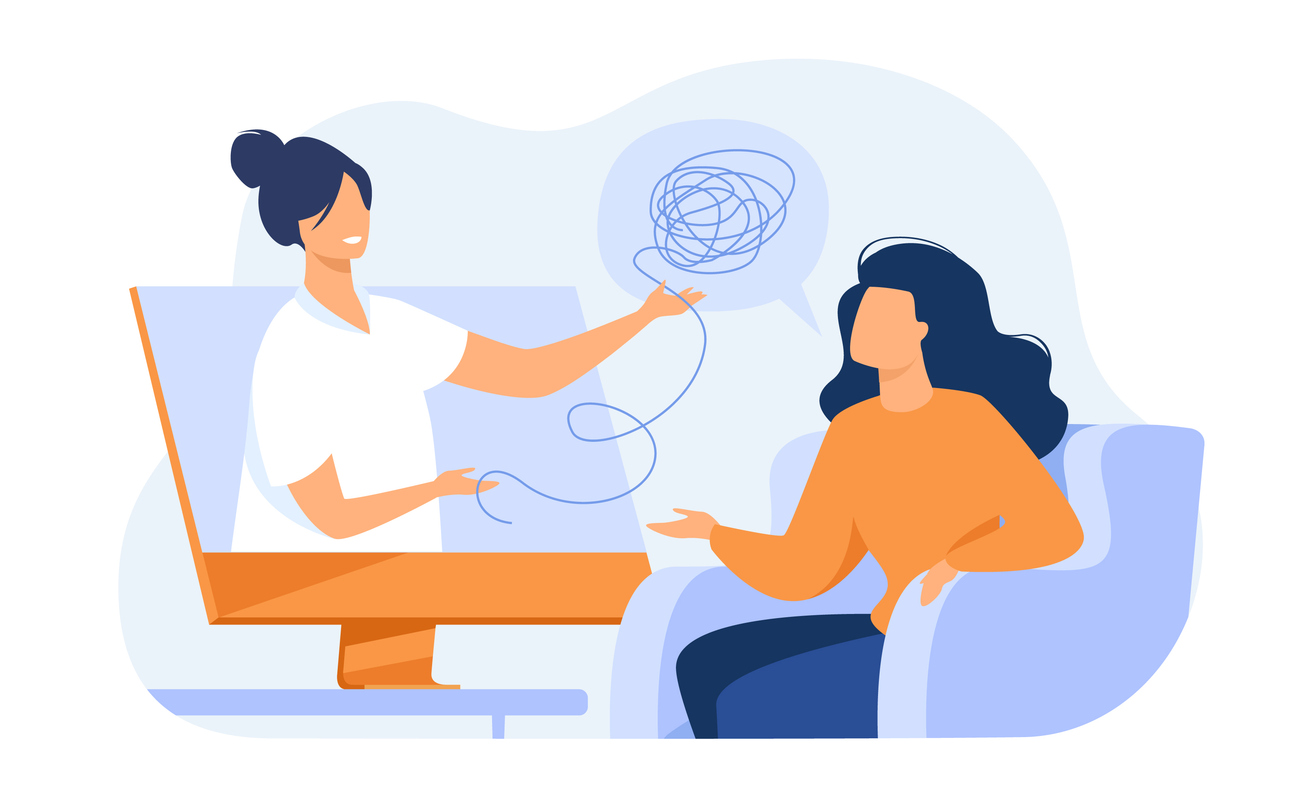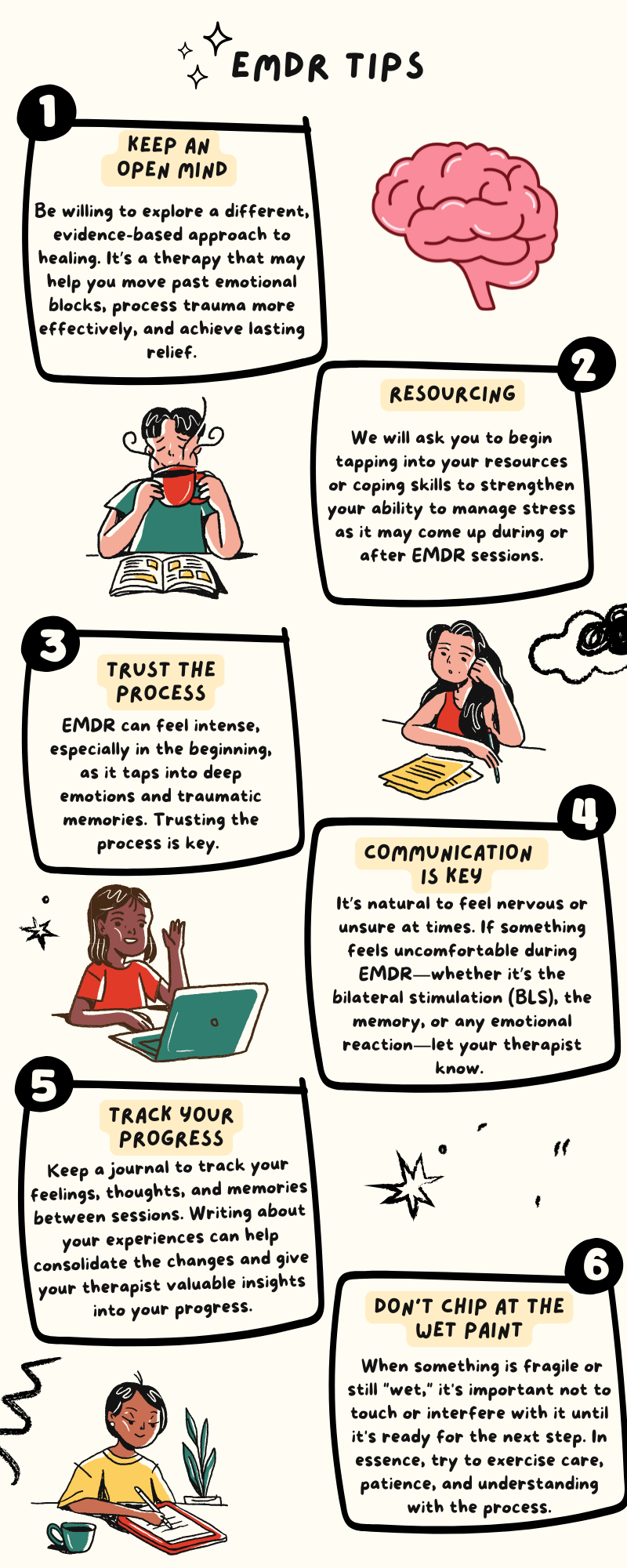Telehealth Services
Individual Psychotherapy
Why Therapy?

Therapy provides tools to heal, grow, and thrive. It's a place to process emotions, gain clarity, and get the support needed to navigate life's challenges. Whether you're dealing with trauma, anxiety, relationship issues, or just want to live a more fulfilled life, therapy helps you explore your inner world in a safe, constructive way. Ultimately, it's about creating a healthier, more balanced life—and that's something worth investing in.
EMDR
Why EMDR?
Eye Movement Desensitization and Reprocessing (EMDR), is a therapeutic approach that helps people process and heal from traumatic experiences or distressing memories. It's based on the idea that when we experience trauma, the memories associated with it can get "stuck" in our brain in a way that makes them feel overwhelming, and we may continue to feel the effects long after the event has happened.
We use EMDR to treat various conditions such as PTSD, anxiety, complex trauma, depression, and phobias.
How Does it Work?
- Processing Trauma: Our brains naturally try to heal from difficult experiences, but sometimes, especially with trauma, the memories and emotions don't get processed fully. This can lead to symptoms like anxiety, nightmares, or flashbacks. EMDR helps these memories "unstick" and reprocess them in a way that allows them to lose their emotional charge.
- Bilateral Stimulation: During EMDR, you'll be asked to follow a moving object with your eyes (or sometimes hear tapping sounds or feel taps). This bilateral stimulation (using both sides of the brain) is thought to help the brain process the traumatic memory more effectively, similar to how our brain processes information during sleep (REM sleep).
- Reducing Distress: The goal of EMDR is to help you change how you feel about the trauma or distressing memory. After processing, the memory may still exist, but it won't carry the same heavy emotional weight, and you'll likely feel more in control and less distressed by it.
- Reworking Negative Beliefs: Often, traumatic events lead to negative beliefs about oneself, like "I'm not safe" or "I'm not good enough." EMDR helps address and shift those negative beliefs to healthier, more balanced ones.
